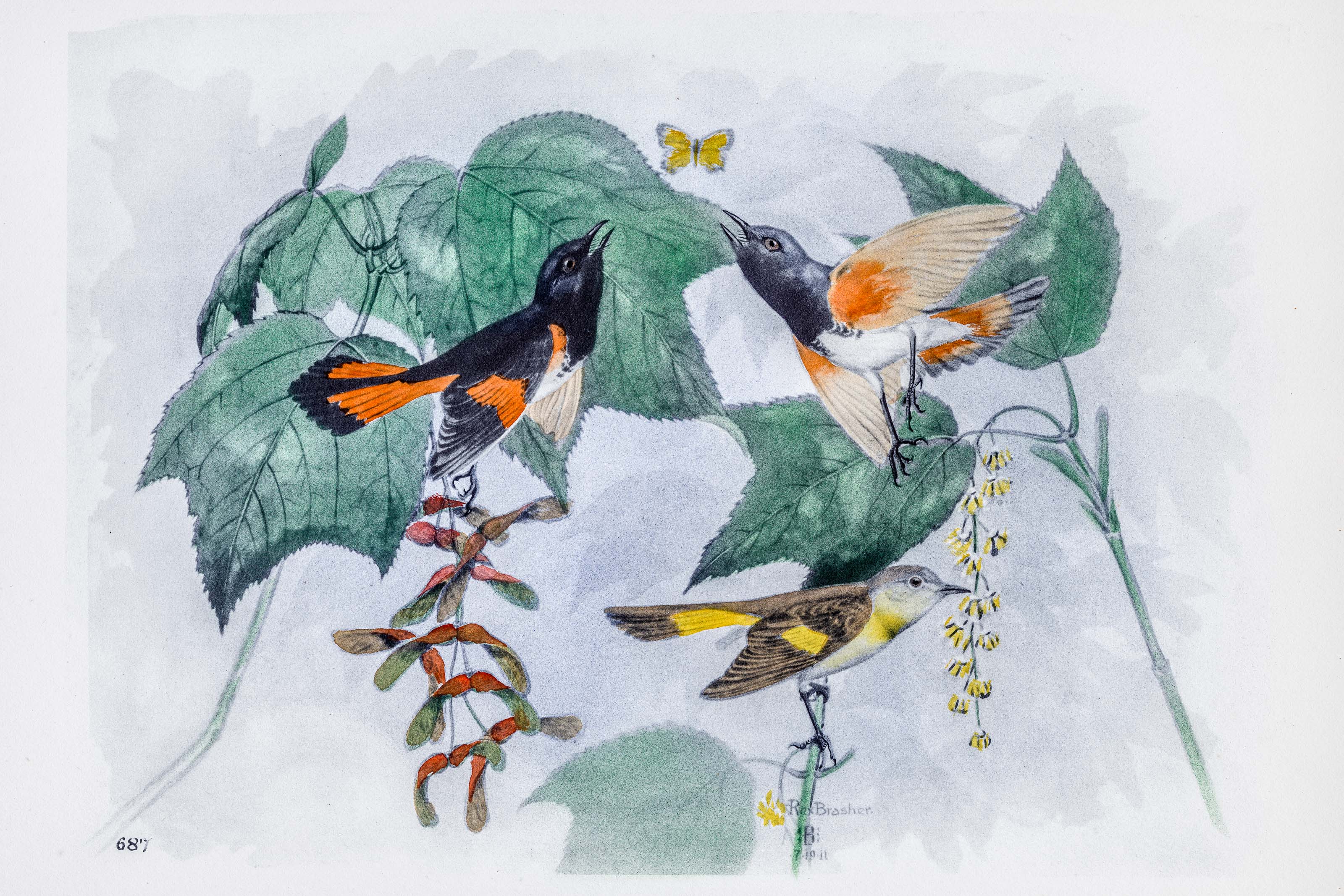
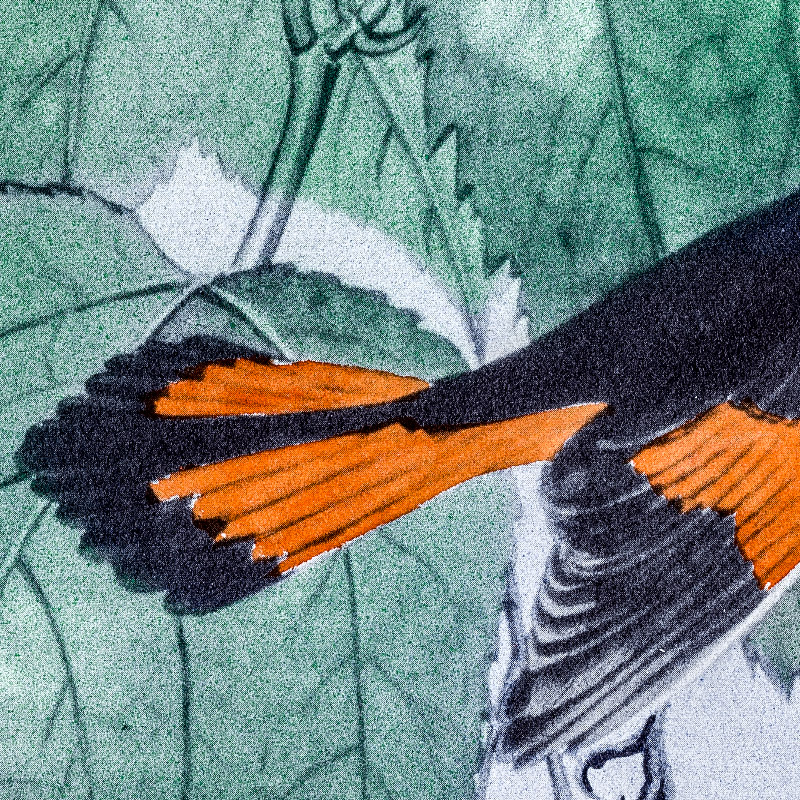
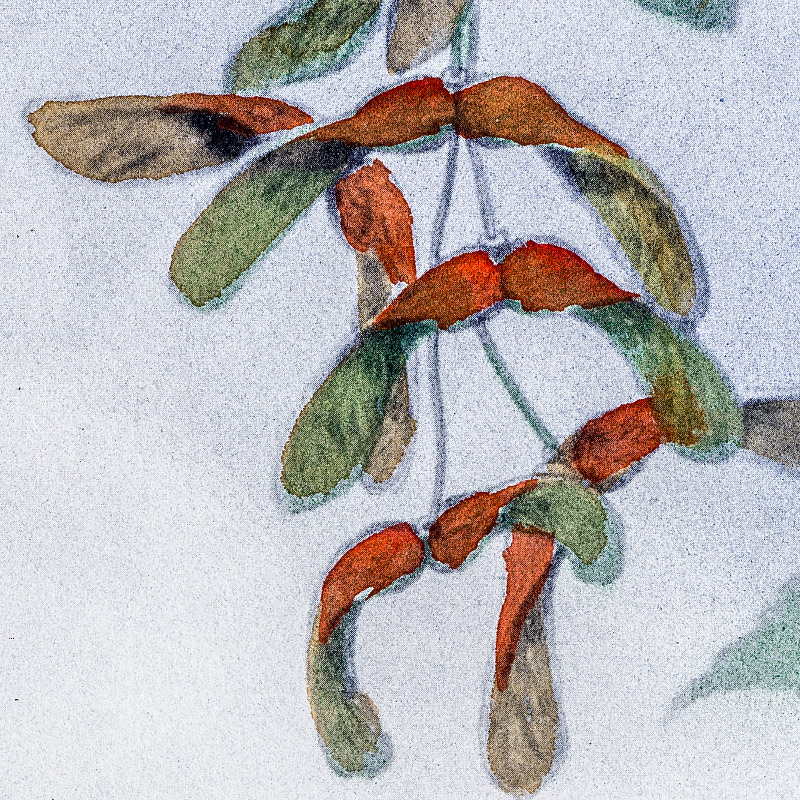
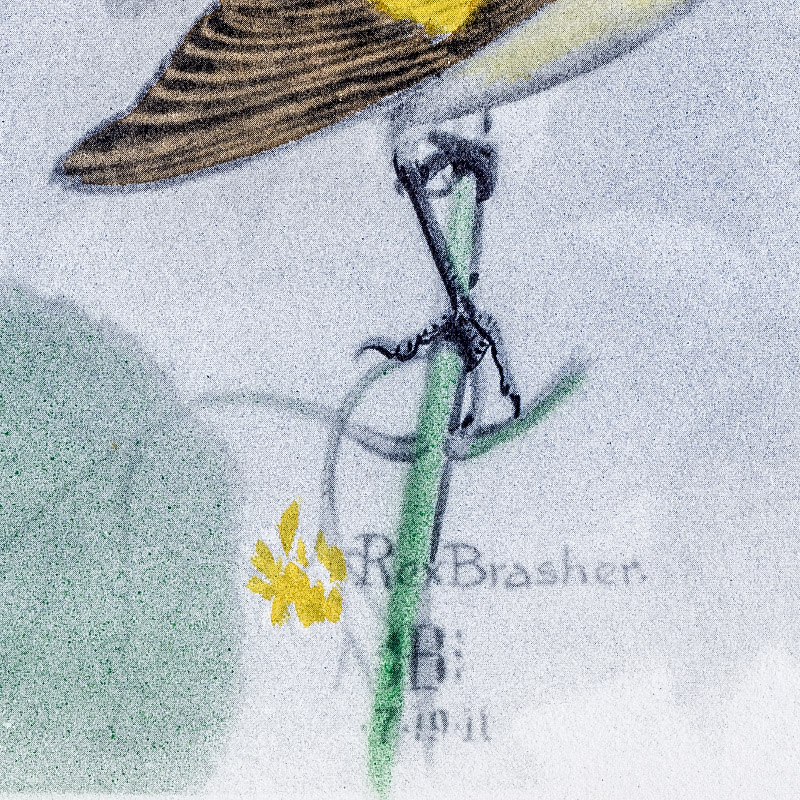
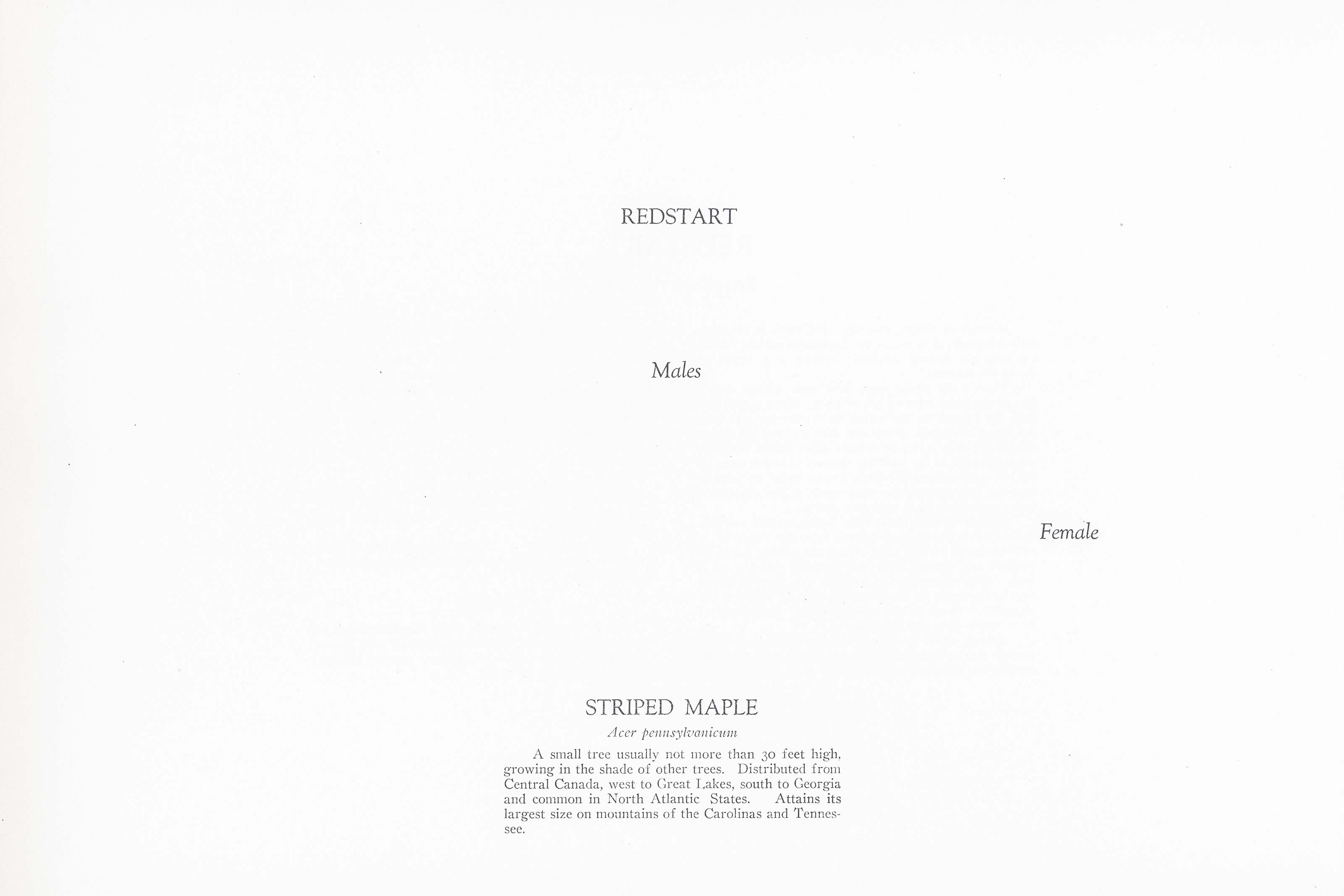
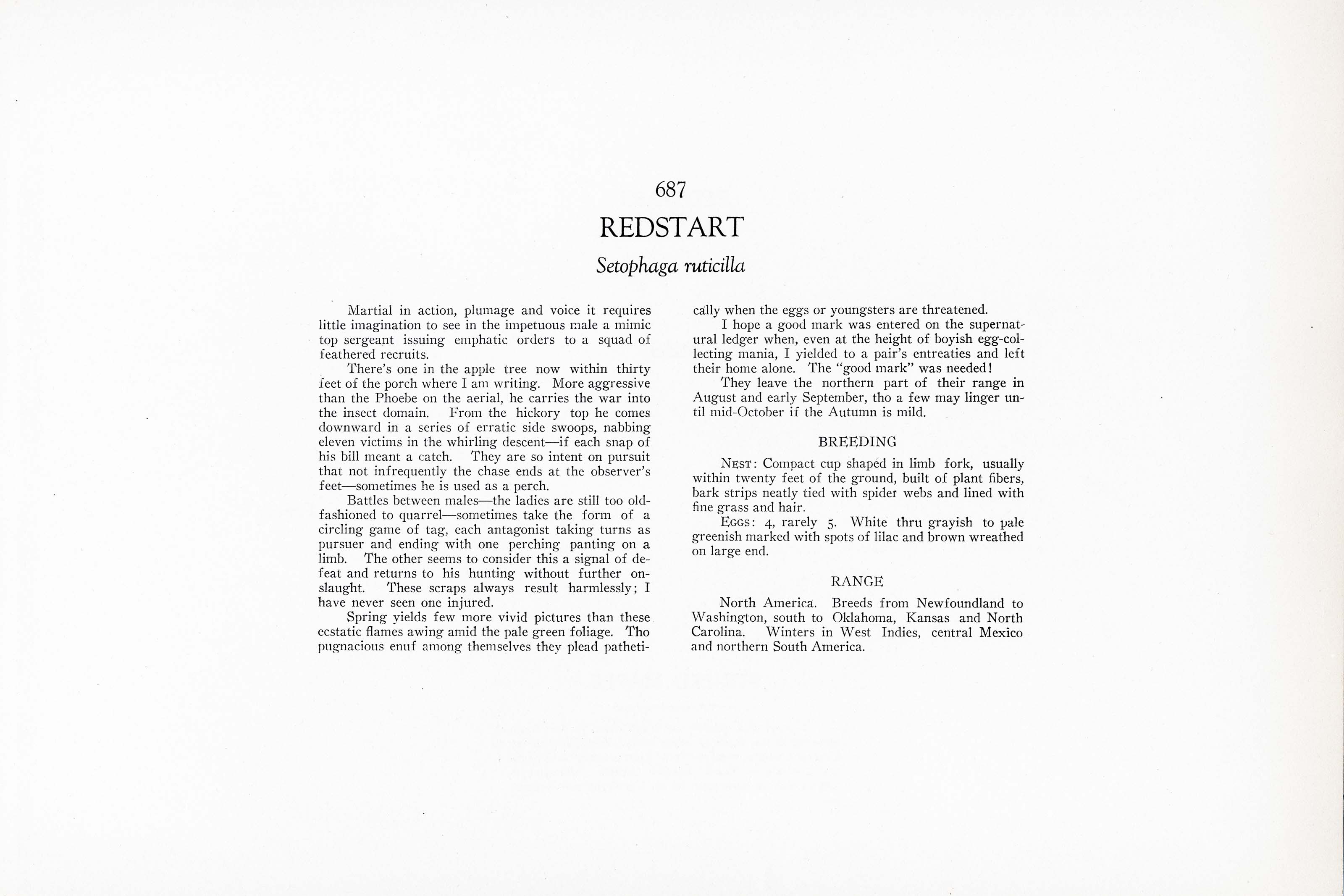

1911
1930
11
687
A team of dedicated board members, volunteers, and student interns has published every page in Volume 9. This volume includes 360 images of paintings and lyrical descriptions of birds, now available online for everyone to enjoy anywhere in the world. This is a monumental task. Each volume requires approximately 400 hours to photograph, edit, transcribe, catalog, and publish online. We need your support to complete this work.
If you're tech-savvy, have a good eye, are meticulous with details, and love structured data, please consider volunteering by emailing us at hello@rexbrasher.org.
We encourage all bird lovers and supporters to consider a monetary donation to support our mission to make Rex's work available for everyone. You can provide a one-time or recurring donation online.
Martial in action, plumage and voice it requires little imagination to see in the impetuous male a mimic top sergeant issuing emphatic orders to a squad of feathered recruits.
There's one in the apple tree now within thirty feet of the porch where I am writing. More aggressive than the Phoebe on the aerial, he carries the war into the insect domain. From the hickory top he comes downward in a series of erratic side swoops, nabbing eleven victims in the whirling descent — if each snap of his bill meant a catch. They are so intent on pursuit that not infrequently the chase ends at the observer's feet — sometimes he is used as a perch.
Battles between males — the ladies are still too oldfashioned to quarrel — sometimes take the form of a circling game of tag, each antagonist taking turns as pursuer and ending with one perching panting on a limb. The other seems to consider this a signal of defeat and returns to his hunting without further onslaught. These scraps always result harmlessly; I have never seen one injured.
Spring yields few more vivid pictures than these ecstatic flames awing amid the pale green foliage. Tho pugnacious enuf among themselves they plead pathetically when the eggs or youngsters are threatened.
I hope a good mark was entered on the supernatural ledger when, even at the height of boyish egg-collecting mania, I yielded to a pair's entreaties and left their home alone. The "good mark" was needed!
They leave the northern part of their range in August and early September, tho a few may linger until mid-October if the Autumn is mild.
NEST: Compact cup shaped in limb fork, usually within twenty feet of the ground, built of plant fibers, bark strips neatly tied with spider webs and lined with fine grass and hair.
EGGS: 4, rarely 5. White thru grayish to pale greenish marked with spots of lilac and brown wreathed on large end.
North America. Breeds from Newfoundland to Washington, south to Oklahoma, Kansas and North Carolina. Winters in West Indies, central Mexico and northern South America.
A small tree usually not more than 30 feet high, growing in the shade of other trees. Distributed from Central Canada, west to Great Lakes, south to Georgia and common in North Atlantic States. Attains its largest size on mountains of the Carolinas and Tennessee.